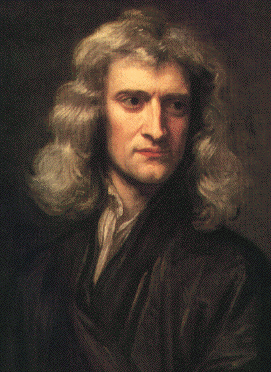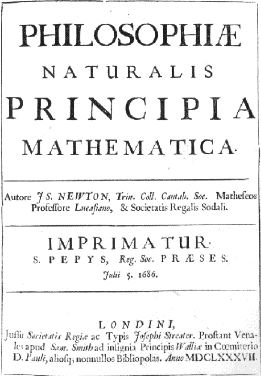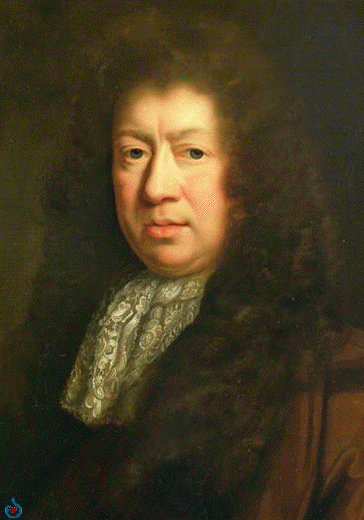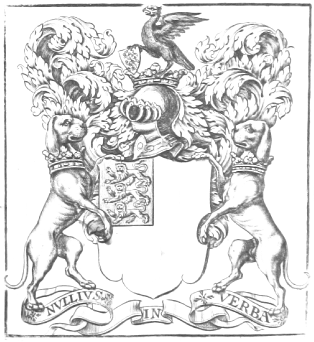Samuel Pepys & Isaac Newton :
How Might They Do in Chemistry 125?
Samuel Pepys &
Science
Experiments
and the Royal Society
Traits of an
Ideal Science Student
The
Correspondence and the
Question
How would
Pepys have done in Chem
125?
Why
Newton might get 95% on a Chem 125
Exam
Isotope
Abundance Problems
Samuel Pepys & Science

|

|

|
|
Isaac Newton
(1643-1727)
|
Mathematical Principles of Natural Philosophy
(1687)
|
Samuel Pepys
(1633-1703)
|
Samuel Pepys, the famed diarist of 17th Century
London, was born in modest circumstances and educated as a
scholarship student at Cambridge. His education was exclusively
in the classics. There were not many math/science students at that
time. (Newton's lectures at Cambridge several decades later were very
poorly attended, and it would be more than a century before Yale had
its first math professor.) In 1662, when Pepys was "clerk of the
acts" of the Navy Board, involved in purchasing stores for the Royal
Navy, he undertook at the age of 29 to learn arithmetic. He found the
multiplication tables particularly challenging, and he rose regularly
at 4 am and stayed up late to study them. They were doubtless useful
for someone in his line of work. The next year he enjoyed teaching
his new-found arithmetic skills to his wife, but opted to skip
division.
During the restoration of the Stuart monarchy,
Pepys was one of the most influential men in England. As Secretary of
the Affairs of the Admiralty he presided over the recovery of the
British Navy and helped make it dominant over those of France and the
Netherlands, which had dealt Britain an ignominious naval defeat in
1667. Despite his lack of science training as a student, he had
natural curiosity and became quite interested in science.
|
Experiments
and the Royal Society

|
From 1684 through 1686 Pepys was
president of the "Royal
Society," which had been founded
in London in 1660 as "the Royal Society for the improving of
Natural Knowledge by
experiments"
and survives as one of the oldest scientific societies. As
president, Pepys' name appears in the imprimatur on the
title page (see above) of Newton's Principia Mathematica, which
the Society published in 1687.
The Royal Society, and its members like
the "chymist" Robert Boyle (1627-1691, P * V =
Constant), and the Society's first "curator of
experiments" Robert Hooke (1635-1703, ut tensio sic
vis), were instrumental in the birth of modern
experimental science. Today designation as "Fellow of the
Royal Society" (FRS) is a high distinction for the 42
British and Commonwealth scientists who are elected each
year.
For its motto the Royal Society had
chosen "Nullius in Verba", a reference to the following
passage from an Epistle written by Horace around 15 B.C. to
his former patron. It described his current philosophical
status.
|
Ac ne forte roges, quo me duce,
quo lare tuter,
Nullius addictus jurare in verba magistri
Quo me cumque rapit tempestas, deferor hospes.
Lest you ask who leads me, in what
household I lodge,
There is no master in whose words I am bound to take an
oath,
Wherever the storm forces me, there I put in as a
guest.
|
|
In adopting the motto "In the Words of
None" the founders of the Royal Society declared that they
were not wedded to the point of view any scientific
authority but rather would be led by the results of
experiment.
The best kind of experiment, one that
decided between rival hypotheses, was referred to by Boyle
and Newton as experimentum crucis, or crucial
experiment, because it was analogous to a signpost
indicating the correct path at the crossing or branching of
a road. This is the origin of the word crucial (from
the Latin crucem for cross).
In Chemistry 125 we will place special
emphasis on understanding and remembering the crucial
experiments that support our understanding of organic
chemistry.
|
Traits of an Ideal
Science Student
Six years after the Principia was
published, and five years after the Stuart King James II had been
exiled, forcing Pepys into retirement, Pepys at the age of 60 carried
on a brief correspondence with Newton, who at 50 had already made his
reputation as the preeminent scientist of the age. This
correspondence shows that in addition to curiosity Pepys had the
following traits, which are important for a science student of any
era:
(1)
disinclination to accept answers based solely on the authority of
an expert
(2)
ability to recognize when he did not truly understand, and
willingness to admit his lack of understanding
(3)
gumption to persist in asking for help, with modesty and good
nature.
The
Correspondence
Between November 22 and December 23, 1693, Pepys
in London exchanged six letters with Newton in Cambridge on a problem
about gambling odds. The ostensible reason for Pepys's interest was
to encourage the thirst for truth of his young friend, Mr. Smith,
though he later revealed in a letter to George Tollet that he himself
was about to stake 10 pounds (equivalent to about $1500 today) on
such a bet. [There is genuine scientific relevance - see
the Chemical Problem below]
The deeper reason for their eagerness to
correspond at this time (there is only one other letter from Pepys in
The Correspondence of Isaac Newton ) may have been that on
September
13, Newton had sent Pepys a weird,
hostile letter causing Pepys to worry about Newton's sanity. So both
parties were trying to restore friendly relations.
November
22
The first letter to Newton introduces Mr.
Smith, who has a "general reputation...in this towne (inferiour
to none, but superiour to most) for his maistery
[of]...Arithmetick". At the close of the letter Pepys
states his problem:
The Question.
A - has 6 dice in a Box, wth wch he is to fling a
6.
B - has in another Box 12 Dice, wth wch he is to
fling 2 Sixes.
C - has in another Box 18 Dice, wth wch he is to
fling 3 Sixes.
Q. whether B & C have not as easy a Taske as
A, at even luck?
November
26
Newton obliges very quickly but notes an
ambiguity:
I was very glad to hear of your good health by Mr
Smith & to have any opportunity given me of shewing how ready I
should be to serve you or your friends upon any occasion & wish
that something of greater moment would give me a new opportunity of
doing it so as to become more useful to you than in solving only a
mathematical question. In reading ye Question it seemed to me at
first to be ill stated...
So Newton restates the question:
What is ye expectation or hope of A to throw
every time one six at least wth six dyes?
What is ye expectation or hope of B to throw every
time two sixes at least wth 12 dyes?
What is ye expectation or hope of C to throw every
time three sixes at least wth 18 dyes?
And whether has not B & C as great an
expectation or hope to hit every time what they throw for as A hath
to hit his what he throws for?
and he provides the answer with a brief
explanation:
If the Question be thus stated, it appears by an
easy computation that the expectation of A is greater then
that of B or C, that is, the task of A is the easiest. And the
reason is because A has all the chances of sixes on his dyes
for his expectation but B & C have not all the chances on theirs.
For when B throws a single six or C but one or two sixes they miss of
their expectations.
and an offer of further help:
But whether I have hit the true meaning of the
Question I must submit to ye better judgments of yourself &
others. If you desire ye computation I will send it you.
December
9
Pepys expresses his deep gratitude but freely
admits his ignorance (remember, he came late to arithmetic and desires further help, including to see the
real calculation rather than just the
conclusion:
...You give it in favour of ye Expectations of A,
& this (as you say) by an easy Computation. But yet I must not
pretend to soe much Conversation wth Numbers, as presently to
comprehend as I ought to doe, all ye force of that wch you are
pleas'd to assigne for ye Reason of it, relating to their
having or not having ye Benefit of all their Chances; and therefore
were it not for ye trouble it must have cost you; I could have wish'd
for a sight of ye very Computation.
After so much "chawing of ye Question" Pepys
suggests reframing the problem in a somewhat less numerical format
involving the execution of Peter:
I must confesse, were I now (after soe much
chawing of ye Question) to begin my pursuit afresh after a Solution
of it; I think I should avoid some of the Ambiguitys that commonly
hang about our Discoursings of it, by changing ye characters of ye
dice from Numbers to Letters, & supposing them instead of 1, 2,
3, &c to bee branded with ye 6 initial Letters of ye Alphabet A,
B, C, D, E, F. And the Case should then bee this;
Peter a Criminal convict being doom'd to dye, Paul
his Friend prevails for his having ye benefitt of One Throw only for
his Life, upon Dice soe prepared; with ye Choice of any one of these
Three Chances for it, viz.
One F, at least upon Six such Dice.
Two F's at least upon Twelve such Dice.
or
Three F's at least upon eighteen such
Dice.
Question. - Which one of these Chances should
Peter in this Case choose?
December
16
Newton reiterates his
conclusion:
In stating the case of the wager, you seem to have
exactly the same notion of it with me; & to the question; which
of the three chances should Peter chuse were he to have but one throw
for his life? I answer, that if I were Peter, I would chuse the
first.
After providing the details of his computation,
involving Progressions which are not trivial to follow but which
allow him to enumerate all the possibilities, Newton
concludes:
The question might have been thus stated, &
answered in fewer words: if Peter is to have but one throw for a
stake of 1000 l. & has his choice of throwing either one six at
least upon six dice, or two at least upon twelve, or three at least
upon eighteen, which throw ought he to chuse; & of what value is
his chance or expectation upon every throw, were he to sell it?
Answer: upon six dice there are 46656 chances, whereof 31031 are
for him; upon 12, there are 2176782336 chances, whereof 1346704211
are for him: therefore his chance or expectation is worth the
31031 / 46656th part of 1000 l. in the first case, & the
1346704211 / 2176782336th part of 1000 l. in the second; that is 665
l. 0 s. 2 d. [*] in the first case, and 618 l. 13 s. 4 d. in
the second. In the third case, the value will be found still less.
[*] Though he gets the fractions and the pounds right,
Newton has some trouble with shillings and pence! The first case
should be worth 665 l. 2 s. 5 p. (as pointed out by H. W.
Turnbull, the editor of Newton's
Correspondence). Note that Newton does not
supply the calculation for the more complex third
case.
December
21
Pepys freely admits that he still needs help in
understanding WHY there is a
difference:
Nor must I conceal my being at ye same loss how
to comprehend, even when flinging 12 Dyes at one throw out of a
Single Box (the said dyes being tinged, halfe Green, half blew) my
being less provided for turning up a Six with either of these
different colour'd Parcels while flung together out of ye same Box,
then were ye Six blew to bee thrown out of one Box, & the 6 Green
from another; in which latter Case, I presume each of them severally
would bee equally entituled to ye producing of a Six with A's Six
white Ones, & by consequence of 2 when flung together. I am
conscious enough that this is but fumbling, & that it ariseth
only from my not knowing how to make ye full use of your Table
of Progressions: but pray bee favourable to my unreadiness in keeping
pace with you therein, & give mee one line of further helpe.
December
23
Newton introduces James, as B, to accompany
Peter, as A, and provide a clearer explanation of his
reason for the difference:
Were James to have twice as many throws as Peter
& as often as he throws a six to win half as much as Peter doth
by the like throws, & by consequence were James to win as much at
every two such throws as Peter doth at every one such throw, &
half as much at every such single throw their cases would be equal.
But this is not the case of the wager. As the wager is stated
Peter must win as often as he throws a six but James may often
throw a six & yet win nothing because he can never win upon one
six alone. If Peter flings a six (for instance) four times in
eight throws he must certainly win four times, but James upon equal
luck may throw a six eight times in sixteen throws & yet win
nothing. For as the Question in the wager is stated he wins not upon
every single throw with a six as Peter doth, but only upon every two
throws wherein he throws at least two sixes. And therefore if he
flings but one six in the two first throws & but one in the two
next & but one in the two next & so on to sixteen throws, he
wins nothing at all tho he throws a six twice as often as Peter doth,
& by consequence have equal luck with Peter upon ye
dyes.
This closed the Newton-Pepys correspondence, but in December Pepys
had also asked the same question of George Tollet, who ultimately
agreed with Newton's results. He also asked his favorite nephew, John
Jackson, for help in evaluating and comparing the Newton and Tollet
analyses. Pepys writes to thank Tollet on
February
14, 1693/4
That A (in our Question) has an easier Taske than
B, & a yet more easy one than C; such (I take it) being ye
Doctrine of this Paper, & full glad I am of my soe seasonably
meeting with it, as being upon ye very Brink of a Wager (10 pounds
deep) upon my former Belief.
Pepys jokes about how he might weasel out of
this bet but still remain vulnerable to a further related wager in a
London coffee house. He persists in wanting to
understand:
But Apostacy (wee all know) is now no Novelty,
& therefore like others I shall endeavour to make ye best of
mine, & face my Antagonist downe that I always meant thus. But
then I must begg Your Ayde, that I may not be outbrav'd (as I have
sometimes seen it done at Garraways) by a Cross-Offer, & for want
of knowing well why, not know which to stick to. But this will
require another Cast of Your Kindnesse; for I cannot bear the
Thought of being made Master of a Jewell I know not how to
wear.
Pepys closes by proposing to meet Tollet for a
help session on that same afternoon (a Wednesday) saying "Friday is
too far off". He obviously was quick to seek help not only from the
professor, but also from the "teaching assistants". We can hope that
it finally clicked for him.
How
would Pepys have done in Chem 125?
Since there is no further documentary evidence on
whether Pepys ever truly succeeded in learning how to "wear this
jewel", it is hard to know how he would have done in Chem 125. He
certainly gave this problem his best shot in a way that has helped
students in Chem 125 succeed - he never pretended to understand when
he did not, and he persisted in seeking help wherever it might be
available.
Why Newton might get
95% on a Chem 125 Exam
Clearly Newton understood how to solve Pepys's
problem, and he got the right numerical answer, so shouldn't he get
100% if this were an exam question in Chem 125?
Arguably not quite, because questions on Chem 125
exams often ask the student to explain why the answer is as it
is - not just to write "yes" or "6.182", or "more ortho than para".
Pepys kept asking "Why," so Newton finally
explained in terms that went beyond mathematical manipulation. In his
December 23 letter he elaborated on the reason to which he had
alluded cryptically on November 26. His explanation was that whereas
Peter, who is throwing only 6 dice for at least one 6, is assured of
winning every time he throws a 6, James, who is throwing 6 dice twice
to make at least two 6s, has no such assurance, because he might
couple a throw with one 6 with another that had none.
This would make it appear that Newton might
think that this explanation is general, so that throwing
four-sided (tetrahedral) dice in a group of 6 to get at least one 4
should be a better bet that throwing 12 such dice to get two 4s. The
same principle would seem to apply, but in fact the chance of
at least one success in throwing 6 tetrahedra is 1-(3/4)^6 = 0.822 ,
while the chance of at least double success with 12 tetrahedra is
1-(3/4)^12-12*(3/4)^11*(1/4) = 0.842.
To show that he had a comprehensive view Newton
should have mentioned that there could be cases when throwing twice
might be an advantage, because of the possibility of rescuing a throw
with no 6s by a throw with 2 or more sixes. The more likely it is for
a 6 to come up, the more important this favorable second term should
be. The second term dominates (that is, two throws is favored over
one throw) when the number of faces on the dice is small, or the
number of dice being thrown as a group is large, so that the chance
of multiple hits on a throw is larger than the chance of zero hits.
When the number in the group thrown for one success is more that
about 1.3 times the number of faces on a single die, two throws for
two successes is favored.
Thus is would not be right to call Newton's answer
perfect. Perhaps he perfectly understood the sources of difference
and was just trying to keep it simple for Pepys, but he gave no hint
that he understood. He clearly showed he could do the math, and he
identified the dominant source in the specific case about which he
was asked. So 95% seems about right, because it leaves room to award
more credit for a really great answer. [Points would not be
subtracted for Newton's understandable difficulty with shillings and
pence, which was, after all, a side issue.]
Certainly Newton would have been capable of a
perfect score on this question, but he had better things to do with
his time. Once he had seen the answer key, I doubt that he would have
complained or been offended by his 95%, and there is no doubt he
would have creamed the course as a whole.
Not surprisingly perfect scores are rare on Chem
125 exams, but the assignment of letter grades is correspondingly
generous.
George Tollet and John Jackson, Pepys's nephew,
actually did mention the (lesser) advantage of throwing multiple
sixes on the second throw of six dice, as well as the disadvantage of
throwing none. But they had been helped by studying Newton's
answer.
Isotope Abundance
Problems
The primary purpose of this web page is obviously
to provide an example of attitudes that are important for success in
Chemistry 125. The course will focus more on "Why?" and "How do you
know?" than on the simple factual answer to questions. Willingness to
recognize and admit the need for help, and to seek it, is "crucial".
The problem in probability that supplies the
setting for this lesson happens to be relevant to organic chemistry,
for example in the area of isotope-ratio mass spectrometry.
Click
here for four problems that illustrate the
application of probability in mass spectrometry
Sources
J. R. Tanner, ed., Private Correspondence and
Miscellaneous Papers of Samuel Pepys, vol. I (Harcourt Brace, New
York, 1926), pp. 72-94.
H. W. Turnbull, ed., The Correspondence of
Isaac Newton, vol. III (Cambridge, 1961), pp. 279-305.
E. D. Schell, Samuel Pepys, Isaac Newton, and
Probability, American Statistician, 14 (4), 27-30
(1960).
a letter to the editor regarding this contribution seems to be the
only published mention of the
lack of generality of Newton's argument. F. B. Evans, American
Statistician, 15 (1), 29 (1961).
F. N. David, Mr. Newton, Mr. Pepys & Dyse:
a Historical Note, Annals of Science, 13, 137-147
(1957).
F. Mosteller, Isaac Newton Helps Samuel
Pepys in Fifty Challenging Problems in Probability with
Solutions (Addison-Wesley, Reading, 1965), pp. 33-35.
For examples of Pepy's studying arithmetic see
entries in his diary for July 4-11, 1662
available at http://www.pepysdiary.com/archive/1662/07/
Claire Tomalin, Samuel Pepys: the Unequalled
Self, (Knopf, New York, 2002)
Encyclopaedia Britannica: Francis Bacon,
Robert Boyle, Royal Society, Samuel Pepys.
Oxford English Dictionary: Crucial
Purchasing Power of the Pound through History:
http://www.eh.net/ehresources/howmuch/poundq.php
Portraits of Pepys and Newton from Wikimedia Commons
Thanks to
John Tully, John Heilbron, Victor Bers, Mark
Johnson
copyright 2003,2007 J. M.
McBride



